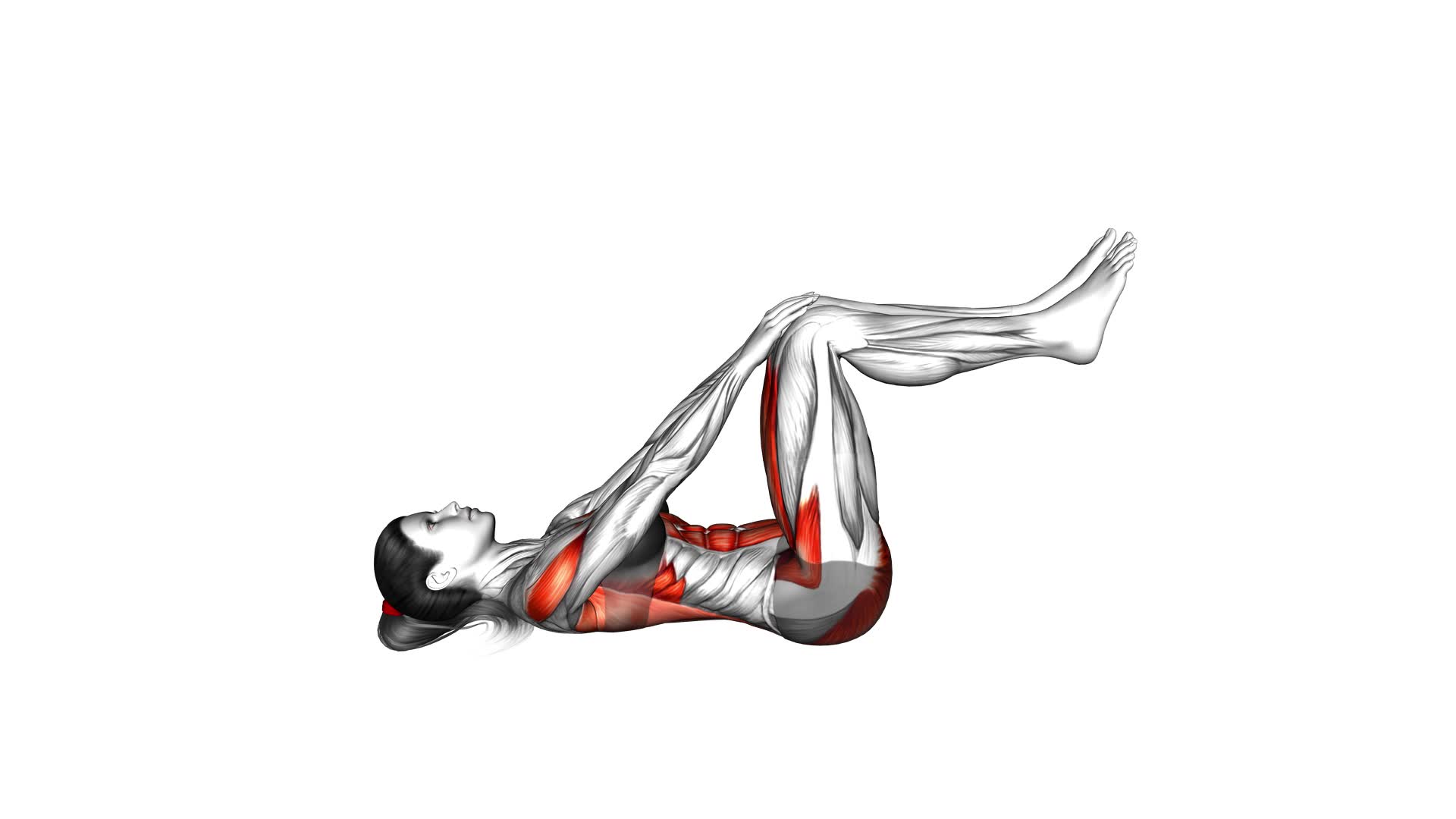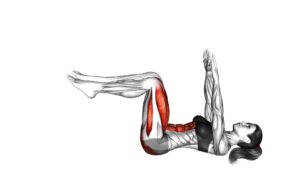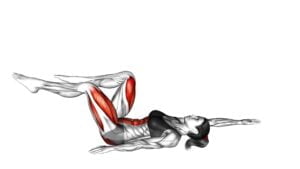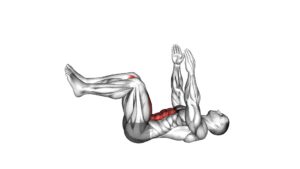Single Dead Bug (female) – Video Exercise Guide & Tips

Are you looking for an effective and engaging exercise to strengthen your core? Look no further than the Single Dead Bug.
Watch This Exercise Video
In this video exercise guide, you'll learn the proper form and technique for performing this exercise, as well as modifications and progressions to suit your fitness level.
Avoid common mistakes and get the most out of your workout with helpful tips.
Get ready to challenge yourself and achieve your fitness goals with the Single Dead Bug exercise.
Key Takeaways
- Enhances core stability
- Improves posture
- Prevents injuries
- Increases overall strength
Benefits of the Single Dead Bug Exercise
You should consistently practice the Single Dead Bug exercise to maximize its benefits. One of the key benefits of this exercise is its contribution to core stability. The core muscles play a vital role in maintaining proper posture, preventing injuries, and enhancing overall strength and balance. By consistently incorporating the Single Dead Bug into your workout routine, you can strengthen these muscles and improve your core stability.
To incorporate the Single Dead Bug into a full body workout routine, you can start by lying flat on your back with your knees bent and feet flat on the ground. Lift your arms towards the ceiling and bring your knees towards your chest, maintaining a 90-degree angle. Then, slowly extend one leg while simultaneously lowering the opposite arm towards the ground. Return to the starting position and repeat on the other side. As you perform this exercise, focus on engaging your core muscles and maintaining a stable position throughout.
By including the Single Dead Bug in your full body workout routine, you can target your core muscles while also engaging other muscle groups. This exercise adds variety and challenge to your routine, helping you achieve a well-rounded workout.
Proper Form and Technique for the Single Dead Bug
To execute the Single Dead Bug exercise correctly, ensure that you maintain a stable position and engage your core muscles throughout the movement.
This exercise is highly effective for strengthening the core and improving stability.
To begin, lie flat on your back with your arms extended towards the ceiling and your legs lifted, knees bent at 90 degrees. Your lower back should be pressed firmly against the ground.
As you exhale, slowly extend your right arm overhead while simultaneously straightening your left leg, keeping them just above the ground. Inhale and return to the starting position. Repeat on the opposite side.
It's important to maintain control and stability throughout the exercise, avoiding any arching of the lower back or excessive movement of the limbs.
To challenge yourself further, you can incorporate variations such as adding a resistance band around your feet or performing the exercise on an unstable surface. These variations will further engage your core muscles and enhance the overall effectiveness of the exercise.
Remember to always focus on proper form and technique, engaging your core muscles to ensure maximum activation and benefit from the Single Dead Bug exercise.
Modifications and Progressions for the Single Dead Bug
For modifications and progressions of the Single Dead Bug exercise, try incorporating a stability ball.
This variation adds an extra challenge to your core workout and engages more muscles.
To begin, lie on your back with your arms extended overhead and your legs bent at a 90-degree angle, feet resting on the stability ball.
As you exhale, extend your left leg and push it away from your body while simultaneously lowering your right arm towards the floor behind you. Inhale and return to the starting position. Repeat on the opposite side, extending your right leg and lowering your left arm.
This modification increases the instability, forcing your core muscles to work harder to maintain balance.
For an even more advanced variation, try using a smaller stability ball or lifting your head and shoulders off the ground as you perform the exercise.
Remember to engage your core and maintain proper form throughout the movement.
By incorporating these modifications and variations, you can continue to challenge yourself and progress in your Single Dead Bug exercise routine.
Keep pushing yourself and enjoy the results!
Common Mistakes to Avoid During the Single Dead Bug
One common mistake to avoid during the Single Dead Bug exercise is improper alignment. Proper form is crucial to get the most out of this exercise and prevent injury. Here are some common mistakes to watch out for:
- Arching your back: When performing the Single Dead Bug, it's important to keep your lower back pressed flat against the ground. Arching your back can put unnecessary strain on your spine and reduce the effectiveness of the exercise.
- Lifting your head and shoulders: Another common mistake is lifting your head and shoulders off the ground. This not only takes the focus away from your core but also puts strain on your neck. Keep your head and shoulders relaxed and maintain a neutral spine throughout the movement.
Proper form is key to getting the full benefits of the Single Dead Bug exercise. By avoiding these common mistakes, you can ensure that you're engaging your core muscles effectively and reducing the risk of injury. Remember to always listen to your body and make modifications as needed to maintain proper alignment.
Stay focused, stay motivated, and enjoy the journey to a stronger core.
Tips for Getting the Most Out of the Single Dead Bug Exercise
To maximize the effectiveness of the Single Dead Bug exercise, focus on maintaining proper alignment and engaging your core muscles throughout the movement. This will ensure that you're getting the most out of each repetition and targeting the intended muscles effectively.
One common modification for the Single Dead Bug exercise is to start with bent knees instead of straight legs. This can help to reduce the intensity of the exercise and make it more accessible for beginners or those with limited flexibility. As you progress, you can gradually straighten your legs to increase the challenge.
Another modification is to use an exercise ball or a foam roller under your lower back for added support. This can help to maintain proper alignment and reduce strain on your lower back.
In terms of breathing techniques, it's important to exhale as you extend your arm and leg away from your body, and inhale as you bring them back towards your body. This will help to engage your core muscles and maintain stability throughout the exercise.
Remember to listen to your body and make adjustments as needed. Don't push yourself too hard or sacrifice proper form for the sake of intensity. By incorporating these tips and modifications, you can ensure that you're getting the most out of the Single Dead Bug exercise and making progress towards your fitness goals.
Frequently Asked Questions
Can the Single Dead Bug Exercise Help With Improving Posture?
The single dead bug exercise can definitely help improve your posture. By correcting rounded shoulders and strengthening your core muscles, this exercise helps to align your spine and maintain proper posture throughout the day.
It targets the muscles in your upper back and shoulders, promoting a more upright position. Incorporating the single dead bug into your routine won't only improve your posture, but also enhance your overall strength and stability.
Keep up the great work!
How Many Sets and Repetitions Should I Do for the Single Dead Bug Exercise?
To improve your core strength with the single dead bug exercise, it's important to determine the number of sets and repetitions that work best for you. By doing multiple sets and repetitions, you'll challenge your muscles and see progress over time.
Remember, there are variations of the dead bug exercise that you can incorporate to keep your routine interesting and continue challenging your core.
Stay motivated and consistent in your workouts to achieve the best results.
Is It Safe to Perform the Single Dead Bug Exercise if I Have Lower Back Pain?
If you're dealing with lower back pain, it's important to be cautious when performing the single dead bug exercise. While it can be a beneficial core exercise, it may exacerbate your pain.
Instead, consider modifying the exercise by reducing the range of motion or using alternative exercises that target the same muscle groups without putting strain on your lower back.
It's always best to consult with a healthcare professional or a qualified fitness trainer for personalized guidance.
Stay safe and listen to your body.
Can the Single Dead Bug Exercise Help With Reducing Belly Fat?
The single dead bug exercise is a great addition to your fitness routine. It targets your core muscles and can help strengthen and tone your abs. While it may not directly reduce belly fat, combining it with a balanced diet and regular cardio exercise can help you achieve your weight loss goals.
If you have lower back pain, there are modifications you can try to make the exercise more comfortable. Overall, the single dead bug exercise has numerous benefits for your health and fitness.
Is It Necessary to Use a Stability Ball for the Single Dead Bug Exercise?
Using a stability ball for the single dead bug exercise isn't necessary. There are alternatives you can try if you don't have a stability ball, such as using a yoga block or a rolled-up towel.
Additionally, there are variations of the dead bug exercise that can target different muscle groups and provide a challenging workout.
Conclusion
Incorporating the single dead bug exercise into your fitness routine can bring numerous benefits. By focusing on core stability and strengthening your abdominal muscles, this exercise can improve your posture and overall body control.
Remember to maintain proper form and technique throughout the movement, and consider modifications and progressions to challenge yourself as you become more comfortable.
Avoid common mistakes and follow these tips to maximize the effectiveness of the single dead bug exercise.
Get ready to enhance your fitness journey and achieve your goals.

Author
Years ago, the spark of my life’s passion ignited in my mind the moment I stepped into the local gym for the first time. The inaugural bead of perspiration, the initial endeavor, the very first surge of endorphins, and a sense of pride that washed over me post-workout marked the beginning of my deep-seated interest in strength sports, fitness, and sports nutrition. This very curiosity blossomed rapidly into a profound fascination, propelling me to earn a Master’s degree in Physical Education from the Academy of Physical Education in Krakow, followed by a Sports Manager diploma from the Jagiellonian University. My journey of growth led me to gain more specialized qualifications, such as being a certified personal trainer with a focus on sports dietetics, a lifeguard, and an instructor for wellness and corrective gymnastics. Theoretical knowledge paired seamlessly with practical experience, reinforcing my belief that the transformation of individuals under my guidance was also a reflection of my personal growth. This belief holds true even today. Each day, I strive to push the boundaries and explore new realms. These realms gently elevate me to greater heights. The unique combination of passion for my field and the continuous quest for growth fuels my drive to break new ground.



